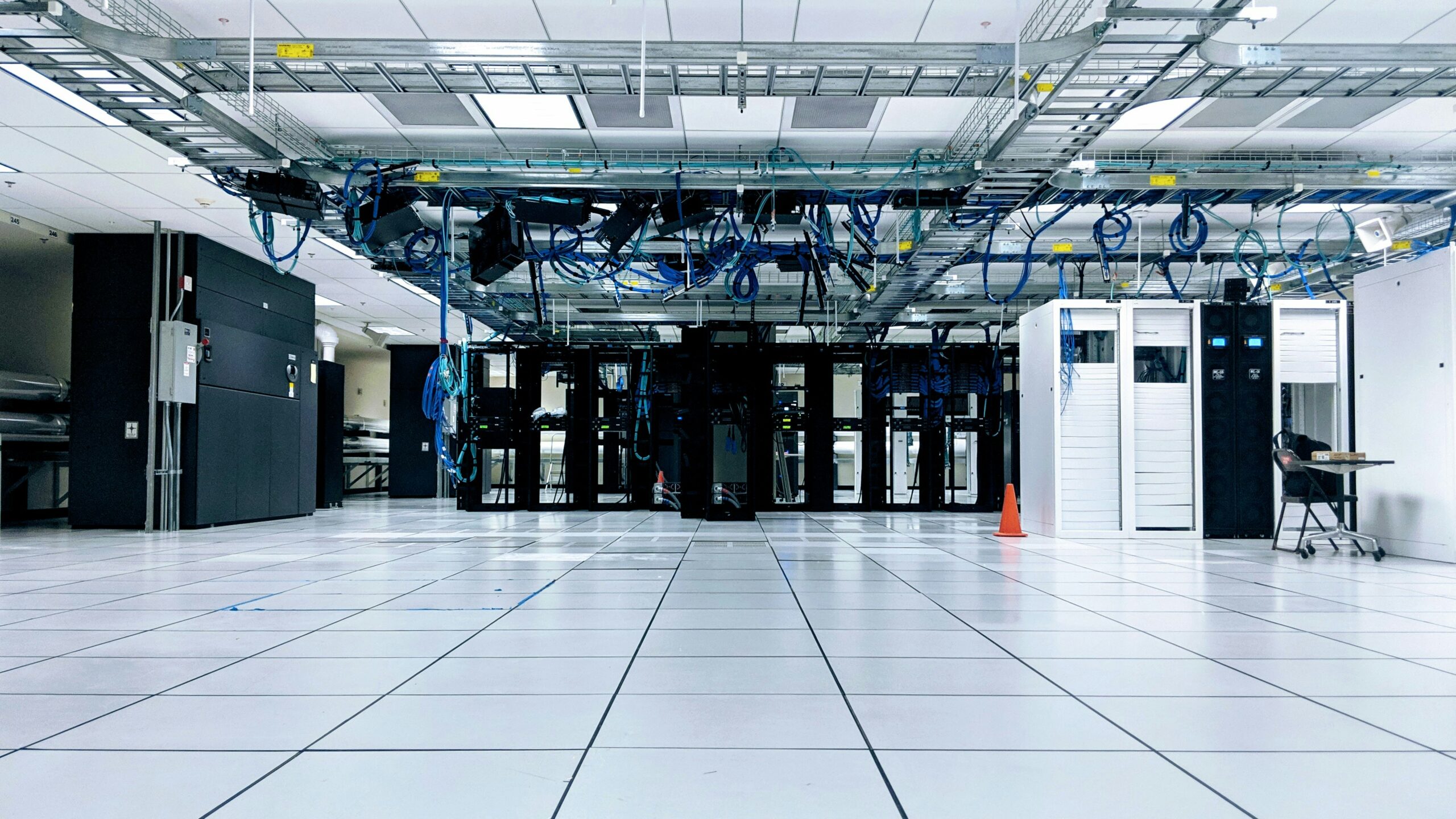Here’s the reality: your NAS is constantly spinning drives, writing data, and managing RAID arrays 24/7. When power cuts out unexpectedly, there’s no gentle shutdown—just an abrupt stop that can corrupt filesystems, damage RAID configurations, and potentially brick drives mid-operation. A UPS isn’t optional equipment; it’s the safety net between normal operation and a weekend spent rebuilding arrays.
The right UPS does three critical things: delivers clean power (pure sine wave matters for modern NAS electronics), communicates with your NAS via USB to trigger automatic shutdown, and provides enough runtime for graceful power-down. We’ve tested and researched four solid options that cover everything from compact 2-bay home servers to hefty 8-bay workhorses, focusing on what actually protects your data rather than marketing buzzwords.
Best UPS for NAS: Quick Comparison
| UPS Model | Capacity | Output Type | Runtime (est.) | Price (Amazon) |
| CyberPower CP1500PFCLCD | 1500VA / 1000W | Pure Sinewave | 10–15 min @ 300W | $239 – Buy Now |
| CyberPower CP1000PFCLCD | 1000VA/600W | Pure Sinewave | 10–15 min @ 200W | $195 – Buy Now |
| APC 1500VA Smart UPS (SMC1500C) | 1500VA / 1000W | Pure Sinewave | 8–12 min @ 300W | $509 – Buy Now |
| APC SMC1000C SmartConnect | 1000VA/600W | Pure Sinewave | 10–15 min @ 200W | $420 – Buy Now |
| GOLDENMATE 1000VA Lithium | 1000VA / 800W | Pure Sinewave | 15–20 min @ 200W | $239 – Buy Now |
Best UPS for NAS: Best Picks
CyberPower CP1500PFCLCD PFC Sinewave UPS
Quick Highlights:
- 1500VA/1000W pure sine wave output for sensitive electronics
- 12 outlets total (6 battery backup, 6 surge only)
- LCD panel showing runtime, load, voltage in real-time
- AVR technology extends battery life by handling voltage fluctuations
- Price – $239 – Buy Now
The CP1500PFCLCD is the go-to recommendation for 4-8 bay NAS systems, delivering genuine pure sine wave power that protects modern Active PFC power supplies found in Synology, QNAP, and enterprise-grade equipment. With 1000 watts of actual power delivery, it comfortably handles a fully-loaded NAS plus all your networking gear (router, switch, modem) with headroom to spare. Users consistently report 25-40 minutes (estimated) runtime at typical loads of 200-300W, which gives plenty of cushion for graceful shutdown or riding out brief outages.
What makes this unit stand out is the LCD panel that shows actionable information – not just vague battery icons, but actual wattage draw, estimated runtime minutes, and input/output voltage. This helps you optimize your setup and catch electrical issues before they become problems. The PowerPanel software integrates seamlessly with every major NAS OS for automated shutdown, and the AVR handles voltage sags and spikes without constantly draining the battery.
Pros
- True pure sine wave output protects sensitive NAS electronics
- Excellent runtime (25-40 min) for typical NAS configurations
- LCD provides genuinely useful real-time metrics
- AVR reduces battery wear by handling voltage issues on AC
Cons
- Higher upfront cost than simulated sine wave alternatives
- Larger footprint may not fit in tight spaces
- Fan can be audible during battery mode
- Battery replacement after 3-5 years adds long-term cost
CyberPower CP1000PFCLCD PFC Sinewave UPS
Quick Highlights:
- 1000VA/600W pure sine wave at budget-friendly pricing
- 10 outlets (5 battery backup, 5 surge only)
- LCD display with runtime and load monitoring
- Compact mini-tower fits smaller spaces
- Price – $195 – Buy Now
The CP1000PFCLCD delivers the same pure sine wave quality as its bigger sibling but sized perfectly for 2-4 bay NAS systems like the Synology DS423+ or QNAP TS-464. At 600 watts, you’ve got enough clean power for your NAS, networking gear, and maybe a small switch without overloading. The key win here is getting legitimate pure sine wave output at a decent price point where most competitors are still peddling simulated sine wave units that can cause issues with modern Active PFC power supplies.
The feature set doesn’t compromise despite the lower price: you still get the LCD showing actual wattage and runtime estimates, AVR to handle dirty power without draining the battery, and USB communication for automated shutdown. Users running typical 2-4 bay setups (100-180W total load) report 25-40 minutes of runtime (estimated), which is more than adequate for graceful shutdown with time to spare. CyberPower’s PowerPanel software works flawlessly with all major NAS operating systems, making setup genuinely plug-and-play.
Pros
- Pure sine wave at a price that undercuts most competitors
- 25-40 minute runtime handles small to mid-size NAS setups
- LCD provides useful metrics without smartphone apps
- Compact footprint works in space-constrained setups
Cons
- 600W limit means no room for future expansion
- Only 10 outlets vs 12 on the larger model
- Not enough capacity for 6+ bay NAS systems
- Battery replacement still required every 3-5 years
APC 1500VA Smart UPS with SmartConnect (SMC1500C)
Quick Highlights:
- 1500VA/900W pure sine wave line-interactive UPS
- SmartConnect cloud monitoring via smartphone app
- Hot-swappable battery allows replacement without shutdown
- LCD display plus cloud portal for dual monitoring options
- Price – $509 – Buy Now
The SMC1500C brings enterprise-level monitoring to prosumer NAS setups through APC’s SmartConnect cloud platform. You get push notifications about power events, battery health alerts, and detailed power quality reports accessible from anywhere via smartphone or web browser. This is genuinely useful for remote workers or anyone managing a NAS they can’t physically check daily – you’ll know immediately if there’s a power issue rather than discovering corruption days later. The 900W capacity handles 4-6 bay systems comfortably with 25-45 minutes of runtime (estimated) depending on load.
Beyond the smart features, this is classic APC reliability with pure sine wave output and line-interactive AVR topology that keeps your NAS receiving clean power without constantly switching to battery. The hot-swappable battery design means you can replace batteries without shutting down your NAS – a huge advantage for always-on deployments. With its staggering price tag, you’re paying premium pricing, but the combination of cloud monitoring, proven reliability, and $150,000 equipment protection policy reflects APC’s confidence in the build quality.
Pros
- Cloud monitoring eliminates need for expensive network cards
- Hot-swap battery maintains uptime during replacement
- Push notifications catch power issues immediately
- APC’s reputation for reliability and support
Cons
- Expensive for the capacity offered
- Requires internet connection for SmartConnect features
- 900W vs 1000W means slightly less headroom than CyberPower
- Cloud dependency may concern privacy-focused users
APC 1000VA Smart UPS with SmartConnect (SMC1000C)
Quick Highlights:
- 1000VA/600W pure sine wave in compact design
- Same SmartConnect cloud monitoring as larger model
- Hot-swappable battery for zero-downtime replacement
- Ideal for 2-4 bay NAS with network equipment
- Price – $420 – Buy Now
The SMC1000C is essentially the SMC1500C’s compact sibling, delivering the same cloud monitoring and enterprise features at 600 watts capacity. This sizing works perfectly for 2-4 bay systems like the Synology DS420+ or QNAP TS-464, and you’re not sacrificing any smart features despite the lower capacity. The SmartConnect app provides 24/7 visibility into power conditions and battery health from your smartphone, which is particularly valuable if your NAS is tucked away in a closet or basement where you don’t regularly check it.
Users with typical 2-4 bay loads (100-150W including networking gear) report 20-35 minutes (estimated) of runtime, which handles graceful shutdown with comfortable margin. The pure sine wave output protects modern electronics properly, and the line-interactive AVR topology means stable voltage without unnecessary battery drain. Once again, you’re paying a premium over the CyberPower equivalent, but that premium buys you APC’s proven reliability, comprehensive monitoring infrastructure, and the peace of mind that comes with their support network.
Pros
- Full SmartConnect monitoring in smaller capacity
- Hot-swap battery maintains 24/7 uptime
- APC reliability with proven track record
- Compact design fits space-constrained setups
Cons
- Premium pricing vs CyberPower CP1000PFCLCD
- Only 600W limits future expansion options
- Cloud dependency for monitoring features
- More expensive than needed for basic setups
GOLDENMATE 1000VA/800W Lithium UPS
Quick Highlights:
- LiFePO4 lithium battery with 10-year lifespan
- 1000VA/800W pure sine wave output
- 230.4Wh capacity, significantly lighter than lead-acid
- No battery replacement needed over typical ownership period
- Price – $239 – Buy Now
The GOLDENMATE takes a fundamentally different approach by using LiFePO4 lithium batteries instead of traditional lead-acid technology. This isn’t just a spec sheet upgrade – it means 10 years of battery life versus the 3-5 years you get from conventional UPS units. Over the life of this UPS, you’ll never deal with battery replacement costs (typically $80-150 per replacement) or the hassle of disposal. The lithium cells also maintain more consistent voltage throughout discharge, providing more stable power delivery and more accurate runtime predictions on the LCD display.
The practical benefits extend beyond longevity: this UPS weighs substantially less than lead-acid equivalents, making installation easier, and the 800W capacity handles 2-4 bay NAS systems with 15-30 minutes (estimated) runtime at typical loads of 150-200W. The pure sine wave output protects your NAS properly, and standard USB connectivity works with all major NAS operating systems. Morever, the upfront cost is higher than traditional UPS units, but when you factor in eliminating battery replacements and the environmental benefits (no toxic lead or sulfuric acid), the total cost of ownership actually becomes competitive.
Pros
- 10-year battery life eliminates replacement hassle and cost
- Lighter weight than lead-acid equivalents
- More environmentally friendly (no lead/acid)
- Consistent voltage delivery throughout discharge cycle
Cons
- Higher upfront cost than traditional UPS units
- Shorter track record compared to established brands
- No cloud monitoring features
- 800W may be limiting for larger setups despite 1000VA rating
Conclusion
Protecting your NAS with a proper UPS isn’t optional – it’s fundamental infrastructure that stands between normal operation and potential data disaster. The three non-negotiables are pure sine wave output for modern electronics, USB communication for automated shutdown, and sufficient wattage to handle your complete setup with 20-30 minutes of runtime. Calculate your actual power draw, add 30-40% headroom for efficiency and future expansion, and prioritize quality over saving a few dollars.
Also Read:
Best Servers for Home Use in 2025









